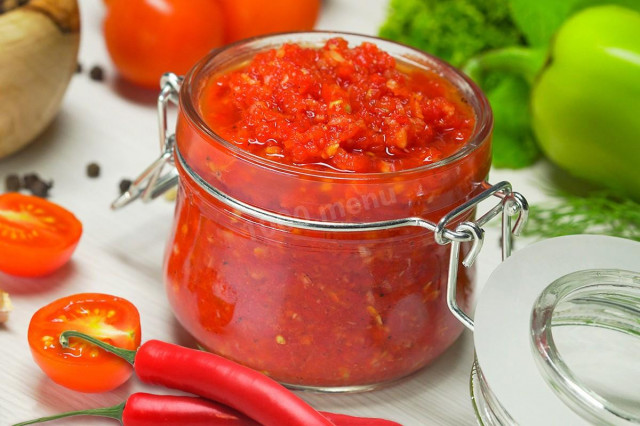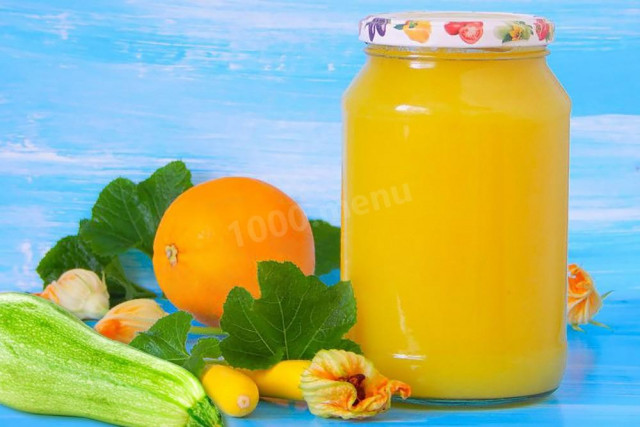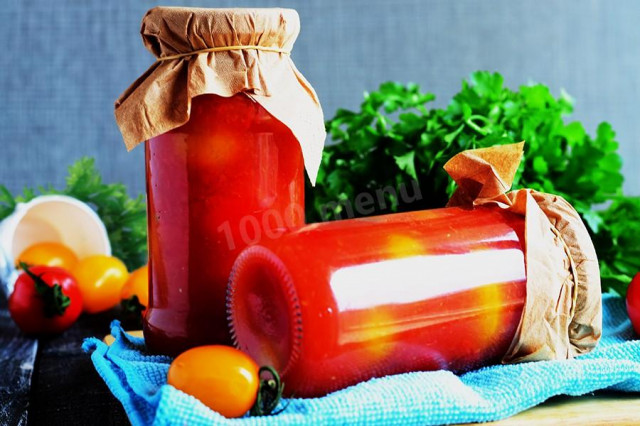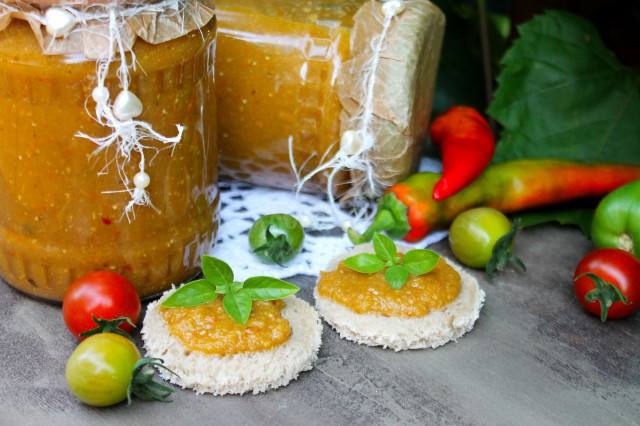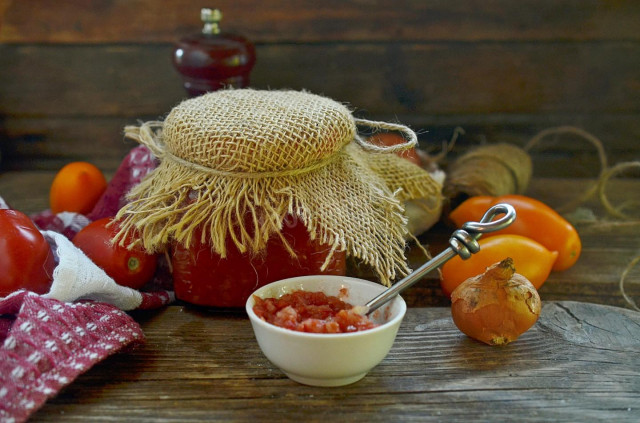Composition / ingredients
Cooking method
First you need to prepare the vegetables necessary for cooking adjika: thoroughly wash the tomatoes and peppers. Since adjika will not be sterilized in the future, special attention should be paid to this process. If any dirty plaque remains on the vegetables, this can lead to souring of the product in the future. For the same reason, all unsuitable damaged areas need to be cut off.
Tomatoes for adjika it is better to choose fleshy varieties, then the adjika will turn out to be quite thick. If you have watery tomatoes with a lot of juice, then the adjika will be liquid. There are two ways to fix the situation: drain some of the juice when slicing tomatoes and use it to cook other dishes (do not forget to weigh the tomatoes and adjust the proportions after that) and try to boil the adjika a little longer so that excess moisture evaporates.
Tomatoes cut into halves, cut off the stems of tomatoes. In Bulgarian peppers, also cut off the stems, cut in half and remove all internal seeds. Cut the pepper into medium pieces.
Cut off the tip of the bitter capsicum and remove the seeds. If you want a sharper adjika, then you can leave the seeds. Also, the amount of bitter pepper can be adjusted depending on taste preferences.
Then tomatoes and peppers should be crushed to a puree state. This can be done using a meat grinder, food processor or blender. Depending on the equipment that is available in the kitchen.
Pour the chopped tomatoes and bell pepper into a large saucepan. If a large volume of the product is being prepared at once, in this case it should be divided into several pots.
Put a saucepan with vegetables on the stove and bring the contents to a boil over medium heat. Next, you need to add vegetable oil to the pan and continue to cook the adjika for an hour on low heat, covering the pan with a lid.
Then season the sauce with salt and sugar, put vinegar in the pan and cook the adjika for about 10 more minutes. At the end, add chopped garlic and finely chopped herbs to the adjika, mix and remove the pan from the heat.
Rinse the glass container thoroughly. Then, together with the lids, pour boiling water over. Pour the finished adjika into the prepared containers and put it in a dark, cool place.
Keep in mind that such adjika turns out to be liquid and is more like a sauce than a paste. If you want to get a thicker adjika, I advise you to choose another recipe - because the composition here is verified. If you change the volume of tomatoes, you need to change the volume of other products.
Adjika, prepared according to this recipe, can be stored for a year in a cool place. It's very tasty!
Bon appetit!
Caloric content of the products possible in the composition of the dish
- Tomatoes - 23 kcal/100g
- Sweet pepper - 27 kcal/100g
- Garlic - 143 kcal/100g
- Granulated sugar - 398 kcal/100g
- Sugar - 398 kcal/100g
- Wine vinegar (3%) - 9 kcal/100g
- Vinegar 9% - 11 kcal/100g
- Balsamic vinegar - 88 kcal/100g
- Apple vinegar - 14 kcal/100g
- Vinegar - 11 kcal/100g
- Vegetable oil - 873 kcal/100g
- Hot capsicum - 40 kcal/100g
- Fresh frozen soup greens in a package - 41 kcal/100g
- Greenery - 41 kcal/100g
- Table salt - 0 kcal/100g

